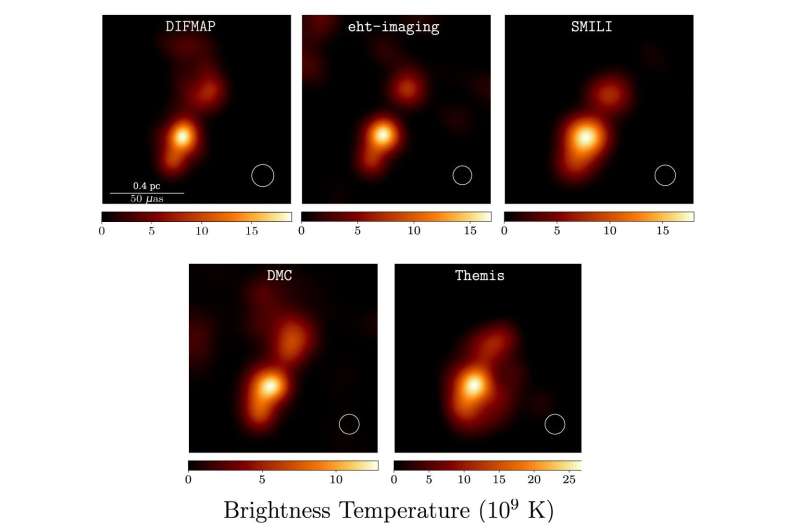February 13, 2023 report
This article has been reviewed according to Science X's editorial process and policies. Editors have highlighted the following attributes while ensuring the content's credibility:
fact-checked
peer-reviewed publication
trusted source
proofread
Event Horizon Telescope captures images of NRAO 530 quasar

A large team of scientists has used data from the Event Horizon Telescope (EHT) project to create images of the NRAO 530 quasar. The findings are published in The Astrophysical Journal.
Quasars are types of active galactic nuclei that are believed to be powered by black holes, generally of the supermassive type. And while black holes do not emit light, the material they pull toward them does as it becomes heated, leading to the brightness typically associated with quasars. In this new study, the astronomers and astrophysicists on the team studied data supplied by many other researchers manning telescopes around the world that play an active role in the EHT project—the same project responsible for creating the first images of Sagittarius A*, the black hole at the center of the Milky Way galaxy.
In addition to the light generated by material as it falls into a black hole, other light is emitted by material that is pulled toward the black hole but doesn't cross the event horizon. Such material, which is converted to plasma, moves past the black hole at a very high rate of speed, which is why they are called jets.
Data for this new effort was obtained by the EHT telescope array going back to 2017. It was initially used to assist in calibration efforts involved in imaging Sgr A*. Doing the same for the NRAO 530 quasar proved more challenging due its greater distance—approximately 7.5 billion light years away. Study of the quasar has shown it to be optically violent—and it is also a blazar; a type of quasar that is oriented such that its jets point nearly directly toward the Earth.
By combining data from multiple telescopes, the research team was able to create two images. Both show brightness at the southern end of one jet, which the researchers believe is a radio core. The resolution of the images was high enough that two components of the core were visible. The group was also able to calculate the polarization of the light emitted from the different parts of the structures visible in the images they created and to map the magnetic fields in the jets.
More information: Svetlana Jorstad et al, The Event Horizon Telescope Image of the Quasar NRAO 530, The Astrophysical Journal (2023). DOI: 10.3847/1538-4357/acaea8
Journal information: Astrophysical Journal
© 2023 Science X Network





















